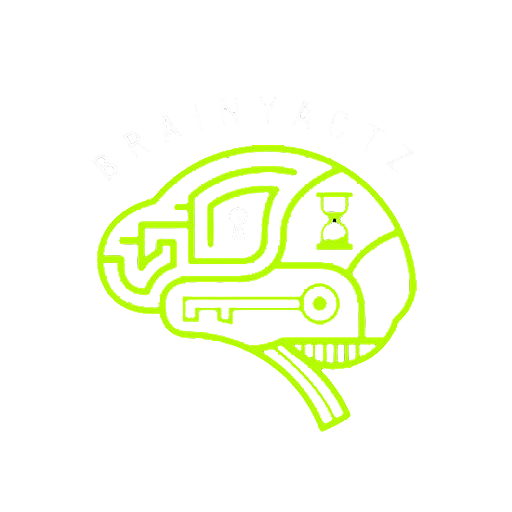Escape rooms have revolutionized corporate team building, turning it into an adrenaline-pumping adventure. Teams work together to solve puzzles and strategize their way out of intricate rooms, guided by a facilitator to boost collaboration and communication. These challenges not only offer fun but also strengthen leadership and conflict-resolution skills. Read on for tips on maximizing the benefits of escape room team building.
Key Takeaways
- Escape Rooms Test and Refine Key Team Skills Like Communication and Leadership
- Exercises Should Match Team Abilities to Maintain Motivation and Enhance Learning
- Real-Time Feedback During Escape Rooms Boosts Engagement and Offers Valuable Performance Insights
- Tailoring Escape Room Challenges to Team Diversity Maximizes Effectiveness and Inclusivity
- Reflective Debriefing Post-Challenge Is Vital to Embed Lessons Into Organizational Culture
Designing Escape Room Challenges to Foster Team Collaboration

Escape room team building uncovers talents and strengthens bonds by emphasizing collaborative problem-solving and effective communication. Adjusting puzzle difficulty motivates and matches the team’s abilities. Envision a setting where solving puzzles and sharing insights are as satisfying and seamless as perfecting a recipe or updating a knowledge base. This captures the essence of an optimized escape room challenge for teams.
Identifying Key Skills and Objectives for Team Development
Understanding the team dynamics and focusing on skills development, like transparency, is essential in designing escape rooms. This not only bolsters trust but also promotes inclusivity by incorporating diverse challenges that cater to different abilities. This approach ensures everyone can contribute equally, enhancing teamwork and job satisfaction.
Creating Puzzles That Require Collaborative Problem-Solving
Imagine a room where the hum of music sets the stage for a shared mission, a place where every team member’s attention is paramount. At a communal whiteboard, each person’s input, viewed through a lens of empathy, translates into a piece of the puzzle, fostering an inclusive atmosphere that bolsters team morale. Every member feels the weight of their contributions, realizing that their shared success hinges not on individual heroics but on their collective problem-solving prowess.
Integrating Tasks That Emphasize Communication and Teamwork
Incorporating diversity and understanding into escape room tasks fosters team synergy, not just through finding clues but by valuing each member’s contribution. Integrated tasks test communication efficiency and drive the group toward a unified goal. Highlights include a Javascript Puzzle enhancing problem-solving skills, Cultural Riddles promoting respect for diverse backgrounds, and Two-Way Radio Challenges improving verbal exchange and active listening.
Tailoring the Difficulty Level to Match Team Capabilities
Adjusting the complexity of escape room puzzles to align with the behavior norms observed during team meetings breathes life into the exercise, making it a mirror of the actual workspace challenges. It teaches teams to speak a common language of problem-solving under pressure, all while ensuring no one is left staring at a clue without a role to play. The visual cues and tasks are calibrated just enough to stretch the team’s abilities without breaking their spirit or confidence.
Leveraging Real-Time Feedback to Enhance Team Performance

At the heart of every successful escape room is the quick sharing of feedback, vital for team triumph. Instant feedback systems allow teams to adjust strategies in real time, making the activity engaging and offering insights into team dynamics. This nurtures a culture of positive communication and immediate improvement, enabling teams to align their efforts toward success as they navigate challenges.
Implementing Systems for Instant Feedback During Activities
Infusing the escape room environment with an interface that provides instant feedback turns the exercise into more than just a scavenger Hunt; it creates a safe space for personal and team growth. The timely reactions from the system help nurture a culture of continuous improvement, allowing teams to adjust strategies and behaviors on the fly. This live interaction isn’t just a feature—it’s an indispensable tool in a market that values agility and adaptability in team dynamics.
Using Feedback to Encourage Positive Team Dynamics
In the adrenaline-infused atmosphere of an escape room, feedback operates as the ultimate customer service and team-building catalyst. It breaks the ice, removing barriers between team members as they navigate the intricacies of the exercise. Encouraging each participant to share instant insights becomes an icebreaker in itself, fostering a growth mindset that invigorates each challenge with camaraderie and a collective drive for success.
Adjusting Challenges Based on Team Performance in Real-Time
In escape rooms, teams face the challenge of real-time adaptation, a reflection of mentorship in action. Leaders, analyzing their team’s performance, can adjust puzzles to match the group’s developing intelligence, echoing the nuances of adapting to new leadership styles. This method explores team dynamics and underlines the importance of adaptability in unpredictable business environments.
Customizing Escape Room Scenarios for Diverse Teams

Enhancing escape room experiences for corporate team building involves recognizing team diversity and customizing challenges for maximum learning and problem-solving. It also fosters inclusivity and seamlessly blends excitement with practical teamwork.
Assessing Team Composition to Design Tailored Experiences
Assessing the mosaic of skills and personalities within a team is a delicate but crucial step that enables the fine-tuning of escape room challenges to ensure every task encourages cooperation. By considering each member’s individual mind and talents, the facilitator can design scenarios that foster trust and accountability, two vital ingredients in the recipe for team cohesion and success.
Incorporating Varied Roles Aligned With Team Members’ Strengths
Just as a carefully curated menu enhances the customer experience in a restaurant, tailoring escape room roles to match individual strengths injects insight into the efficacy of the workforce. By selectively assigning tasks that resonate with each member’s expertise, a team’s policy for triumph becomes evident, paving the path to a collectively savored victory.
Ensuring Inclusivity in Puzzle Design and Storyline
Escape room designers craft experiences that build community and empower participants by blending diverse narratives. These stories promote inclusivity, requiring critical thinking and nonverbal communication so everyone can shine with confidence. This method fosters a meaningful experience where every voice contributes to the collective dream, making the adventure more immersive.
Integrating Leadership Development Into Escape Room Activities

Escape rooms highlight and develop leadership qualities in corporate team building by challenging members, revealing hidden skills, and fostering strategy development. Enhanced by AI insights, these experiences boost engagement and leadership skills, equipping teams with a deeper understanding of their leadership potential for professional growth.
Structuring Scenarios to Highlight Leadership Qualities
Escape room scenarios, designed to spotlight and develop emerging leaders, use technology tools to enhance leadership skills and teamwork under pressure. These activities enhance decision-making, resource delegation, and team efficiency, while also improving dynamics by encouraging confidence and cooperation. Elements like time-sensitive puzzles, role assignments via apps, and post-challenge votes foster leadership recognition, accountability, and respect, effectively strengthening team collaboration and performance.
Fostering Opportunities for Each Member to Lead
In the pulsing heartbeat of the escape room, each challenge becomes a canvas for collaboration and strategic thinking, prompting team members to alternate leadership roles. As they navigate through intricate puzzles that test their acumen, subtle shifts in body language and quick strategic decisions emerge, offering invaluable insights into each person’s leadership potential. Through this interactive theatre, the use of team collaboration tools amplifies overall productivity, fostering an environment where every individual is encouraged to steer their colleagues toward success.
Reflecting on Leadership Dynamics Post-Escape Room Challenges
After an escape room challenge, teams reflect on their performance to embed leadership qualities into their organizational culture, especially important in remote work settings. This reflection process enhances collective wisdom, reinforces psychological safety, and emphasizes communication, resilience, and remote collaboration dynamics to strengthen trust and teamwork.
Employing Escape Rooms for Conflict Resolution Training

In the corporate development arena, escape rooms are key for boosting conflict resolution skills. Designed to mimic workplace challenges, they offer a dynamic way to cultivate diplomacy and strategic thinking. Teams engage in realistic scenarios requiring cooperation and rational choices, making these activities more than just fun; they’re innovative tools that foster leadership and collaboration within companies.
Designing Challenges That Simulate Workplace Conflicts
Using escape rooms as a team-building activity can replicate workplace conflicts and pressures, helping teams practice communication and problem-solving. By incorporating collaboration tools, such as team voting apps and virtual budgeting software, team members can develop skills like flexible leadership and strategic thinking in a safe, simulated environment.
Facilitating Discussions on Conflict Resolution Strategies
In the aftermath of an escape room challenge, the team congregates, often around the glowing screens of the company intranet, turning it into a vital tool for dialogue. The goal is simple yet profound: to dissect the events, understand each other’s viewpoints, and forge effective strategies for conflict resolution that contribute to the team’s health and cohesion. This platform becomes the stage for sharing ideas and feelings, laying the groundwork for a stronger, more resilient unit.
Building Scenarios That Require Cooperative Problem Resolution
Escape rooms replicate real-world workflow challenges, fostering seamless cooperation to address organizational issues like absenteeism and communication barriers. They utilize digital tools such as task managers and messaging apps to enhance adaptability and engagement, ultimately strengthening the team’s workflow rhythm.
Measuring Success and ROI of Escape Room Team Building

When organizing escape room team-building events, it’s crucial to set clear objectives and KPIs to measure success. Gathering data and analyzing participant feedback are also essential for refining future events and driving team improvement.
Setting Clear Objectives and Key Performance Indicators (KPIs)
Setting clear goals and key performance indicators (KPIs) is vital to solidifying escape room team building as a workplace staple. This can be measured through effective communication, problem-solving efficiency, and conflict resolution skills. Tracking progress through team discussions, escape time, and successful conflict resolution helps organizations realize the benefits of their efforts.
Gathering Data on Team Performance and Outcomes
Assessing the impact of an escape room challenge on team dynamics necessitates a robust data collection strategy. Facilitators can gauge the effectiveness of communication channels and the depth of collaboration by monitoring interactions and the decision-making process during the activity. Satisfaction surveys post-challenge, coupled with direct observation, capture valuable reflections on the team’s performance, offering insights that can shape future team-building interventions and provide a clear understanding of their return on investment.
Analyzing Feedback for Continuous Improvement of Future Events
Once the escape room’s doors open and the team steps back into reality, the real work begins—sifting through feedback to sculpt more impactful future adventures. By meticulously analyzing participants’ comments and reactions, organizers pinpoint areas ripe for refinement, enhancing the puzzle’s design, the rooms’ themes, and the debriefing sessions. This critical analysis ties the loop of experience to evolution, ensuring each subsequent team-building foray is sharper, more engaging, and perfectly aligned with corporate objectives.
Conclusion
Elevating escape room experiences enhances team building by using real-time challenges to develop key workplace skills like communication, problem-solving, and leadership. Customizing puzzles to match team diversity and dynamics strengthens professional relationships and offers practical conflict-resolution scenarios. Analyzing team performance throughout these activities promotes continuous improvement and measurable growth, fostering a collaborative, adaptable, and high-performing team culture.

